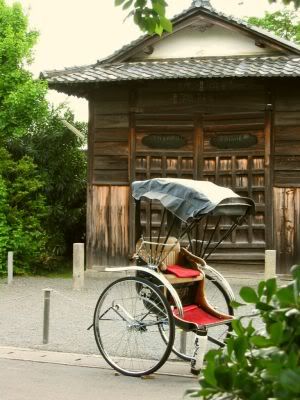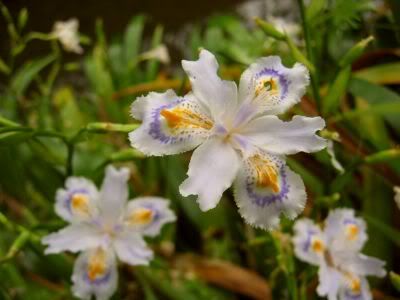I don't consider myself a staunch practitioner of Buddhism but I have great faith in the Teachings of the Buddha. One's religion is whatever one is most interested in. Today, I like to share with you about what I have learnt many years ago back in the university. The content of this post maybe too long and boring but bear with me, I'd say 5 minutes max, ok ?
Gautama is the key figure in Buddhism. According to tradition,
Siddhartha Gautama was a prince. His father Suddhodana was the king of the Sakya people, and ruled in the capital of Kapilavatsu, today within the border of Nepal. Siddhartha Gautama was born in Lumbini under the full moon of May. As the boy reached the age of 16, his father arranged a marriage to a cousin of the same age, Yashodhara, and she gave birth to a son, Rahula.
Although his father ensured that Gautama was provided with everything he could want or need, Gautama was constantly troubled and internally dissatisfied. At the age of 29, Gautama was escorted by his attendant Channa on four subsequent visits outside of the palace. There, he came across the 'four sights' : an old crippled man, a diseased man, a decaying corpse, and finally a monk. Gautama realized then the harsh truth of life - that death, disease, age, and pain were inescapable, that the poor outnumbered the wealthy, and that even the pleasures of the rich eventually came to nothing.

Inspired, Gautama left his home, his possessions and his family at age 29. He chose to become a monk. Abandoning his inheritance, he dedicated his life to learning how to overcome suffering. He began training in the ascetic life and practicing vigorous austere (morally strict) practices. After 6 years, and at the brink of death, he found that the severe ascetic practices did not lead to greater understanding, but merely clouded the mind and tortured the body.
Once discarding asceticism and concentrating on meditation, he discovered the middle way (The Eightfold Path), a path of moderation away from the extremes of self-indulgence and self-mortification. The Buddha claimed he had realized complete Awakening and insight into the nature and cause of human suffering, along with the steps necessary to eliminate it. At the age of 35, he attained Enlightenment under the full moon in May. This understanding manifested itself in the Four Noble Truths. For the remaining 45 years of his life, he taught his doctrine and discipline to an extremely diverse range of people. At the age of 80, Gautama passed away on a full moon day in May.
Wesak Day is the most holy time in the Buddhist calendar. It commemorates the birth, Enlightenment and passing of Gautama Buddha on the one historical day, the first full moon day in May.
 Understanding meditation
Understanding meditation - it usually refers to a state in which the body is consciously relaxed and the mind is allowed to become calm and focused, discounting wandering thoughts and fantasies. Meditation does not necessarily require effort and can be experienced as 'just happening'. Meditation means to see things as they really are in their true perspective and nature. Meditation is not reserved only for people living in an ashram or a cave or for people whose sole interest is spirituality. The purposes for which people meditate vary - it may serve simply as a means of relaxation from a busy daily routine, or even as a means of gaining insight into the nature of reality.

Meditation can be done with the eyes closed (as long as one does not fall asleep), or with the eyes open - physical postures include sitting (usually cross-legged), standing, lying down, and walking.

Now, in
sitting meditation, one just sit doing nothing, just breathing. After adjusting oneself in comfortable posture, you just simply concentrate on the breathing-in and breathing-out. As distractions and thoughts inevitably arise, simply notice that they are there - don't get caught up in them or get irritated by them - and then simply return to the observation of the breath.
 Walking meditation
Walking meditation is walking up and down a fixed path with mindfulness. As you walk back and forth, find a pace that gives you a sense of ease. With your attention in the legs and feet, feel the sensations of each step. Feel the contact of the foot with the ground. Whenever you notice that the mind has wandered, bring it back to the sensations of the feet walking - this helps maintain a continuity of awareness.
 Mantra recitation
Mantra recitation is the most widespread form of meditation in the Buddhist world. Part of the power of chanting meditation is that it unites body, breath, voice, and mind as these aspects of our existence become focused through the activity of chanting. The mind itself experiences a high degree of unification when chanting.

In the recent years there has been a growing interest within the medical community to study the physiological effects of meditation. Dr. Herbert Benson of the Mind-Body Medical Institute reported that meditation induces a host of biochemical and physical changes in the body collectively referred to as the 'relaxation response' - changes in metabolism, heart rate, respiration, blood pressure and brain chemistry.

Life seems to be a perpetual struggle, some enormous effort against staggering odds. And what is our solution to all this dissatisfaction? We get stuck in the ' If only' syndrome. If only I had more money, then I would be happy. If only I can find somebody who really loves me, if only I can lose 20 pounds, and on and on forever. There is not a thing wrong with this. It is the nature of the universe. But no matter how hard you pursue pleasure and success, there are times when you fail. No matter how fast you flee, there are times when pain catches up with you. And in between those times, life is so boring you could scream. Our minds are full of opinions and criticisms. We have built walls all around ourselves and we are trapped with the prison of our own lies and dislikes. We suffer.
Meditation is intended to purify the mind. It cleanses the thought process of what can be called psychic irritants, things like greed, hatred and ignorance. It brings the mind to a state of peace and awareness. The purpose of meditation is personal transformation. Meditation sharpens your concentration and your thinking power.

As the Buddha said, 'I only point the way. I am not God. I am not special. I am awakened. I point the way of awakening. You yourself must walk it, as I have, if you choose to'. It is a path to travel.
Note : Two years ago, I attended a morning meditation session in Tofukuji Temple, Kyoto as the abbot of the temple taught Zazen meditation to the general public.

























































